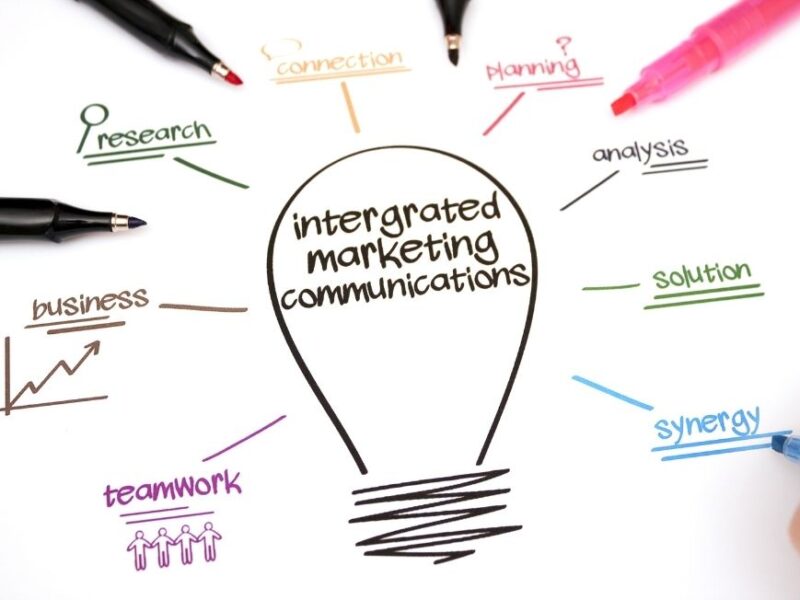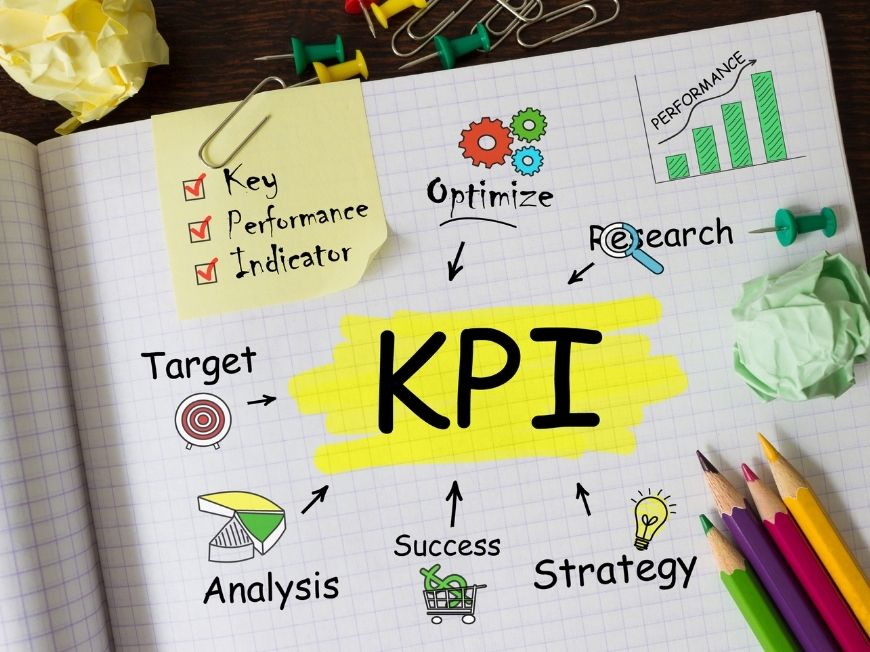On this page you will read detailed information about Integrated Marketing Communications.
In today’s rapidly evolving business landscape, your ability to effectively convey a consistent message across multiple channels is paramount. Integrated Marketing Communications (IMC) serves as a strategic approach that unifies various marketing tools and platforms to deliver a cohesive brand experience. By understanding and implementing IMC, you can enhance brand integrity, maximize consumer engagement, and optimize resource allocation. This comprehensive overview will guide you through the essential components of IMC, exploring its benefits and illustrating how it can elevate your marketing efforts. As you navigate this intricate domain, you’ll discover the power of synergy in crafting a unified narrative that resonates with your audience.
Defining Integrated Marketing Communications (IMC)
Understanding Integrated Marketing Communications
Integrated Marketing Communications (IMC) represents a strategic coordination of various promotional tools and channels to deliver a unified message about a brand or product. By harmonizing different marketing activities, businesses can effectively communicate their values and offerings to a larger audience, ensuring clear and consistent messaging across all platforms.
Components of IMC
IMC encompasses several key components that work together to create a seamless communication strategy. These include advertising, public relations, direct marketing, sales promotion, and digital marketing. Each component plays a unique role, contributing to the overall impact and reach of the marketing message. By integrating these elements, companies can leverage the strengths of each to enhance their overall marketing effectiveness.
The Importance of Consistency
Consistency is at the heart of IMC. It ensures that all marketing messages reinforce each other, building a stronger brand image and fostering consumer trust. For example, a consistent brand message across social media, email marketing, and in-store promotions helps reinforce the brand’s core values and promises, making it easier for consumers to recall and trust the brand.
Benefits of Integrated Marketing Communications
IMC offers several benefits, including improved brand recognition, increased customer loyalty, and better resource allocation. By unifying marketing efforts, businesses can avoid redundancy and conflicting messages, ultimately saving time and money. Additionally, a well-executed IMC strategy can improve customer engagement by providing a cohesive and personalized experience, tailored to the preferences of the target audience.
In essence, Integrated Marketing Communications is a comprehensive approach that ensures all marketing efforts are aligned, delivering a unified and compelling brand narrative that resonates with consumers and strengthens brand loyalty.
Key Components of an Effective IMC Strategy
Consistent Messaging Across Channels
An effective Integrated Marketing Communications (IMC) strategy begins with consistent messaging, which ensures that your brand’s voice and promise are cohesive across all platforms. This uniformity not only helps in maintaining brand identity but also builds trust amongst consumers. By employing a harmonized message, whether it’s through social media posts, email campaigns, or TV commercials, you cement your brand’s narrative in the minds of your target audience. Remember, the key is not to repeat the exact same message but to convey the same underlying sentiment and values across different mediums.
Coordinated Marketing Efforts
Coordination among different marketing channels is vital for maximizing the impact of your efforts. This involves aligning all promotional activities to work towards the same strategic objectives, ensuring each channel complements the others. By doing so, you amplify the reach and effectiveness of your communications. For instance, a promotional campaign that incorporates content marketing, digital advertising, and public relations will have a far greater impact if these elements are synchronized rather than functioning in silos.
Data-Driven Decision Making
Data analytics play a crucial role in shaping a successful IMC strategy. By leveraging consumer data, you can gain deeper insights into customer preferences, enabling you to tailor messages and campaigns to better meet their needs. This involves utilizing data from customer interactions and feedback across various channels to continually refine and adjust your marketing strategies. Data-driven decision-making not only fosters more personalized marketing efforts but also enhances overall campaign performance.
Clear and Measurable Objectives
Setting clear, measurable objectives is essential in assessing the effectiveness of an IMC strategy. Specific goals help guide the development of your marketing tactics and serve as benchmarks against which success can be gauged. These objectives should be aligned with the broader business goals and include key performance indicators (KPIs) such as brand awareness levels, engagement rates, and conversion metrics. By establishing these targets, you provide your team with a focused path and a means to evaluate progress and make necessary adjustments.
The Benefits of Implementing Integrated Marketing Communications
Creating a Unified Brand Experience
One of the most compelling benefits of implementing Integrated Marketing Communications (IMC) lies in its ability to create a cohesive brand experience. By unifying all marketing channels and messages, IMC ensures that your audience receives a consistent and seamless interaction with your brand, whether they engage with your website, social media, advertisements, or physical stores. This consistency not only fosters brand recognition but also builds trust and loyalty among consumers, as they come to know and understand your brand more intimately.
Enhancing Marketing Efficiency
Integrated Marketing Communications allows for the strategic allocation of resources, thereby enhancing overall marketing efficiency. By coordinating campaigns across various channels, you can eliminate redundant efforts and reduce costs. The synergy created by IMC means that each element of your marketing strategy works in harmony, amplifying the impact of your campaigns. This streamlined approach not only saves time and money but also maximizes the effectiveness of your marketing efforts, resulting in a higher return on investment.
Improving Customer Engagement
IMC provides a comprehensive approach to customer engagement by delivering targeted and relevant messages to specific audiences. Through the integration of data and insights, you can tailor your communications to meet the needs and preferences of different consumer segments. This personalization fosters deeper connections with your customers, encouraging interaction and engagement across multiple touchpoints. As a result, IMC empowers you to build meaningful relationships with your audience, ultimately driving customer satisfaction and brand loyalty.
In essence, Integrated Marketing Communications offers a plethora of benefits that can significantly enhance the effectiveness of your marketing strategy. By fostering a unified brand experience, improving efficiency, and enhancing customer engagement, IMC proves to be an indispensable tool in today’s competitive marketplace.
In the previous post, we had shared information about Understanding KPIs: What Is a Key Performance Indicators?, so read that post also.
How to Develop a Successful IMC Plan
Define Your Objectives
The first step in developing a successful Integrated Marketing Communications (IMC) plan is to clearly define your objectives. Establishing measurable goals will guide your entire strategy, whether you’re aiming to increase brand awareness, drive sales, or enhance customer loyalty. Consider using the SMART criteria—specific, measurable, achievable, relevant, and time-bound—to ensure your objectives are clear and attainable.
Understand Your Audience
To create compelling messages, it’s vital to have a deep understanding of your target audience. Conduct thorough market research to gain insights into your audience’s demographics, preferences, and behaviors. This knowledge will allow you to tailor your communications to resonate effectively with them, creating a more personalized experience and fostering stronger connections.
Select the Right Channels
An essential component of an effective IMC plan is selecting the appropriate channels for your messages. Evaluate your audience’s media consumption habits and choose platforms that align with their preferences. By integrating both traditional and digital media, such as social media, email, television, and print, you can create a cohesive and comprehensive marketing strategy that maximizes reach and engagement.
Craft a Consistent Message
Consistency is key in Integrated Marketing Communications. Develop a core message that reflects your brand’s values and voice, ensuring it’s consistently communicated across all channels. A unified message helps reinforce your brand’s identity and increases the likelihood of your audience remembering and trusting your brand.
Evaluate and Adjust
Finally, it’s crucial to regularly evaluate the effectiveness of your IMC plan. Use analytics tools to monitor performance and gather feedback from your audience. This data-driven approach will enable you to make informed adjustments, ensuring your strategy remains agile and effective in achieving your objectives. By continually refining your approach, you can maintain a successful IMC plan that evolves with changing market dynamics.
Case Studies: Successful Integrated Marketing Communications in Action
Coca-Cola’s “Share a Coke” Campaign
One of the most striking examples of Integrated Marketing Communications (IMC) in action is Coca-Cola’s “Share a Coke” campaign. This global phenomenon demonstrated the power of personalized marketing by replacing the iconic logo on bottles with popular first names. The campaign utilized a multi-channel strategy that included traditional media, digital marketing, and experiential activities. Coca-Cola leveraged social media platforms to encourage consumers to share their personalized bottles, creating a viral effect. By doing so, the brand effectively increased consumer engagement and strengthened its emotional connection with its audience, showcasing the true potential of IMC in building brand loyalty.
Apple’s Seamless Ecosystem
Apple’s marketing strategy epitomizes Integrated Marketing Communications through its seamless ecosystem. Apple’s advertising campaigns, product launches, and retail experiences are meticulously coordinated to deliver a consistent brand message. The company uses a combination of media, including TV commercials, online platforms, and in-store displays, to maintain a unified narrative about its product offerings. This consistency not only reinforces the brand’s identity but also enhances consumer trust and loyalty. Apple’s approach highlights how IMC can be employed to create a cohesive brand experience that resonates across various touchpoints.
Nike’s “Just Do It” Approach
Nike’s IMC strategy is another prime example, with its “Just Do It” campaign becoming a cultural icon. By integrating storytelling across its advertisements, social media, and events, Nike effectively communicates its brand values and inspires countless individuals worldwide. The company’s use of influential athletes and compelling narratives across different media channels ensures that the brand stays relevant and engaging. Nike’s success illustrates the impact of a well-executed IMC strategy in elevating brand perception and fostering emotional connections with consumers. This approach underscores the importance of cohesion and adaptability in modern marketing.
Conclusion
In the ever-evolving landscape of modern marketing, understanding Integrated Marketing Communications (IMC) is not merely beneficial—it is essential. By harmonizing various marketing channels and strategies, IMC allows you to deliver a consistent and compelling message that resonates with your audience, maximizes impact, and optimizes resource allocation. As you navigate the complexities of audience engagement, embracing IMC will empower you to craft cohesive narratives that enhance brand identity and drive business success. By integrating your marketing efforts, you can not only meet but exceed the expectations of a discerning and dynamic market, ensuring your brand remains relevant and influential.
Disclaimer
The content published on the Marketyra blog is for educational and informational purposes only. While we strive to share accurate and up-to-date digital marketing tips, strategies, and trends, we do not guarantee any specific results. Readers are advised to use their own judgment before applying any tips or advice provided. Marketyra is not liable for any losses, damages, or issues arising from the use of blog content.
So friends, today we talked about Integrated Marketing Communications, hope you liked our post.
If you liked the information about Integrated Marketing Communications, then definitely share this article with your friends.
👉 Need help with SEO or digital marketing services?
Feel free to call us at 📞 +91-9306925861, email us at 📧 admin@marketyra.com to get in touch!






